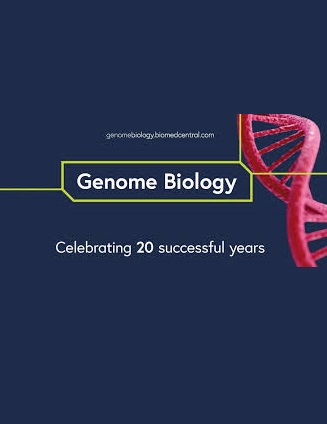人类神经母细胞瘤肿瘤和临床前模型的综合单细胞 RNA-Seq 图谱揭示了不同的间充质样基因表达程序
IF 10.1
1区 生物学
Q1 BIOTECHNOLOGY & APPLIED MICROBIOLOGY
引用次数: 0
摘要
神经母细胞瘤是一种常见的儿童癌症,临床前研究表明,间质样基因表达程序会导致化疗耐药性。然而,临床疗效仍然不佳,这意味着我们需要更好地了解患者肿瘤异质性与临床前模型之间的关系。在这里,我们生成了神经母细胞瘤细胞系、患者异种移植模型(PDX)和基因工程小鼠模型(GEMM)的单细胞 RNA 序列图。我们开发了一种无监督机器学习方法("自动共识非负矩阵因式分解"(acNMF)),将临床前模型中发现的基因表达程序与大量患者肿瘤进行比较。我们证实,在一些经过预处理的高风险患者肿瘤中,肾上腺素能癌细胞中存在一种弱表达的间质样程序,但这似乎不同于细胞系中明显存在的假定抗药性间质程序。然而,令人惊讶的是,这种弱间充质样程序在PDX中得以维持,而且在我们的GEMM中,仅在24小时后就能被化疗诱导,这表明存在一种未定性的治疗逃逸机制。总之,我们的研究结果加深了人们对神经母细胞瘤患者肿瘤异质性如何反映在临床前模型中的理解,为临床和临床前单细胞 RNA-seq 数据集的联合分析提供了全面的综合资源和一套可推广的计算方法。本文章由计算机程序翻译,如有差异,请以英文原文为准。
An integrated single-cell RNA-seq map of human neuroblastoma tumors and preclinical models uncovers divergent mesenchymal-like gene expression programs
Neuroblastoma is a common pediatric cancer, where preclinical studies suggest that a mesenchymal-like gene expression program contributes to chemotherapy resistance. However, clinical outcomes remain poor, implying we need a better understanding of the relationship between patient tumor heterogeneity and preclinical models. Here, we generate single-cell RNA-seq maps of neuroblastoma cell lines, patient-derived xenograft models (PDX), and a genetically engineered mouse model (GEMM). We develop an unsupervised machine learning approach (“automatic consensus nonnegative matrix factorization” (acNMF)) to compare the gene expression programs found in preclinical models to a large cohort of patient tumors. We confirm a weakly expressed, mesenchymal-like program in otherwise adrenergic cancer cells in some pre-treated high-risk patient tumors, but this appears distinct from the presumptive drug-resistance mesenchymal programs evident in cell lines. Surprisingly, however, this weak-mesenchymal-like program is maintained in PDX and could be chemotherapy-induced in our GEMM after only 24 h, suggesting an uncharacterized therapy-escape mechanism. Collectively, our findings improve the understanding of how neuroblastoma patient tumor heterogeneity is reflected in preclinical models, provides a comprehensive integrated resource, and a generalizable set of computational methodologies for the joint analysis of clinical and pre-clinical single-cell RNA-seq datasets.
求助全文
通过发布文献求助,成功后即可免费获取论文全文。
去求助
来源期刊

Genome Biology
Biochemistry, Genetics and Molecular Biology-Genetics
CiteScore
21.00
自引率
3.30%
发文量
241
审稿时长
2 months
期刊介绍:
Genome Biology stands as a premier platform for exceptional research across all domains of biology and biomedicine, explored through a genomic and post-genomic lens.
With an impressive impact factor of 12.3 (2022),* the journal secures its position as the 3rd-ranked research journal in the Genetics and Heredity category and the 2nd-ranked research journal in the Biotechnology and Applied Microbiology category by Thomson Reuters. Notably, Genome Biology holds the distinction of being the highest-ranked open-access journal in this category.
Our dedicated team of highly trained in-house Editors collaborates closely with our esteemed Editorial Board of international experts, ensuring the journal remains on the forefront of scientific advances and community standards. Regular engagement with researchers at conferences and institute visits underscores our commitment to staying abreast of the latest developments in the field.
 求助内容:
求助内容: 应助结果提醒方式:
应助结果提醒方式:


